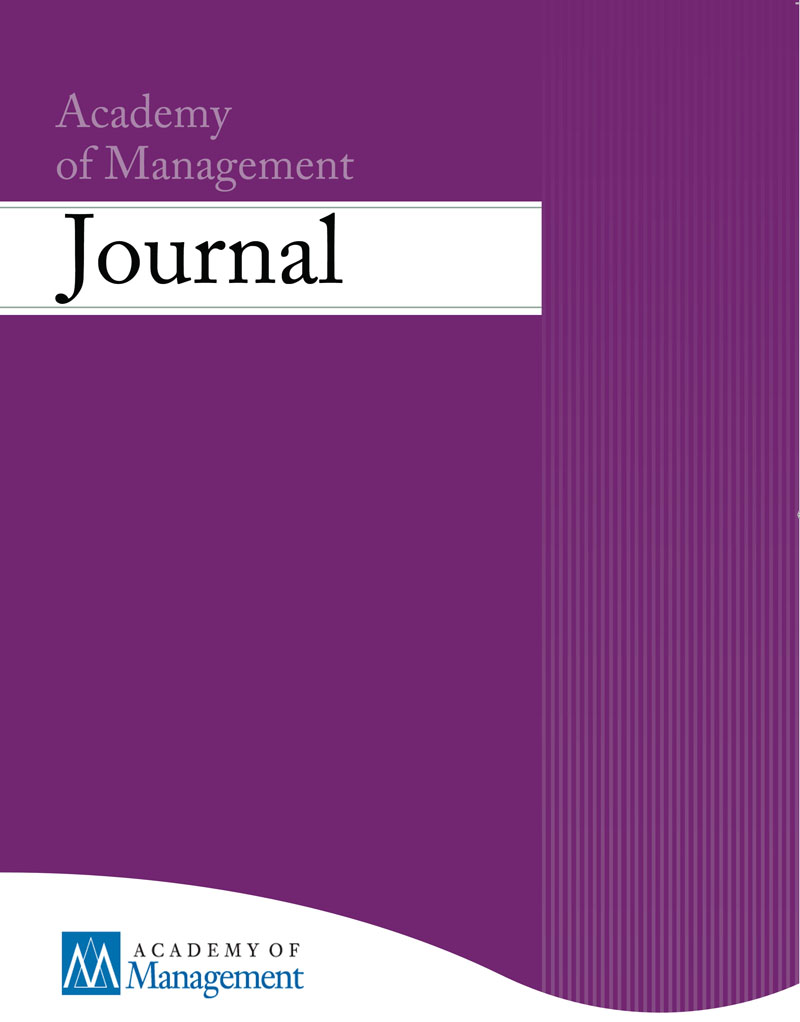Could family firms hold the secret to making mergers less painful and more successful?
Francesco Chirico, Robert E. Hoskisson, Seemantini Pathak, Massimo Baù
Audio > Play / Stop
CeFEO's Authors
CeFEO counts more than 50 scholars and 30 affiliated researchers. Several studies and reports have consistently identified CeFEO as a leading research environment worldwide in the area of ownership and family business studies.
This research project, has been co-authored by the following CeFEO Members.
Reference
Spotlight highlights research-based findings only. If you’re interested in exploring this project further or delving into the theoretical and methodological details, we encourage you to contact the authors or read the full article for a comprehensive understanding.

Chirico, F., Hoskisson, R. E., Pathak, S., & Baù, M. (2025). Calm in the storm: Job security and post-merger performance in family versus nonfamily firms. Academy of Management Journal, 68(4), 845–869.
https://doi.org/10.5465/amj.2023.0496

What is Spotlight?
Spotlight is an innovative online family business magazine designed to bridge the gap between cutting-edge research and the real-world needs of practitioners, owners, and policymakers. Drawing on the latest findings from the Centre for Family Entrepreneurship and Ownership (CeFEO) at Jönköping International Business School, Spotlight delivers insightful, accessible summaries of key research topics. Our mission is to keep the family business community informed and empowered by offering actionable insights, expert analyses, and forward-thinking strategies that enhance business leadership and ownership practices for long-term success.

This article is brought to you by the WIFU Foundation
Spotlight is generously supported by the WIFU Foundation, which promotes research, education, and dialogue in the field of family business. This partnership enables us to continue bridging academic insights and real-world practice for the advancement of responsible family entrepreneurship and ownership.
Calm in the Storm: How Family Firms Protect Jobs and Outperform After Mergers
Mergers and acquisitions (M&As) are usually accompanied by fear and disruption: layoffs, culture clashes, and short-term profit pressures. Yet new research reveals a striking pattern—when two family firms merge, they not only protect jobs but also deliver superior post-merger performance compared to nonfamily firms. Drawing on Swedish data and global interviews, Chirico, Hoskisson, Pathak, and Baù (2025) show how family firms’ long-term orientation and shared identity make them resilient during one of business’s most turbulent transitions.
Mergers and acquisitions (M&As) are usually accompanied by fear and disruption: layoffs, culture clashes, and short-term profit pressures. Yet new research reveals a striking pattern—when two family firms merge, they not only protect jobs but also deliver superior post-merger performance compared to nonfamily firms. Drawing on Swedish data and global interviews, Chirico, Hoskisson, Pathak, and Baù (2025) show how family firms’ long-term orientation and shared identity make them resilient during one of business’s most turbulent transitions.
Few events shake a company more than a merger. Employees often wonder: Will I still have a job? Owners weigh financial risks, while leaders struggle to align two corporate cultures. For decades, scholars and practitioners have viewed mergers primarily as efficiency-driven exercises—consolidate, cut costs, and move on.
But what if mergers could be moments of strength rather than fear?
Family firms, which employ more than 60% of the global workforce, approach mergers differently. They see employees not just as cost factors but as long-term partners in a shared legacy. The new study published in the Academy of Management Journal uncovers a surprising advantage: family-to-family mergers generate higher job security and stronger financial performance than any other combination.
This finding matters not only for researchers, but also for family business leaders who increasingly face industry consolidation, succession challenges, and growth opportunities through mergers.
What We Studied
Data and Scope
The study examined 1,173 mergers among private Swedish firms between 2004 and 2012, comprising:
- 115 family–family mergers
- 389 family–nonfamily mergers
- 669 nonfamily–nonfamily mergers
Outcomes were tracked for up to five years post-merger, providing robust insights into long-term effects.
Methodology
- Quantitative analysis: A longitudinal dataset measuring job security (employee retention rates) and post-merger performance (return on assets).
- Qualitative interviews: 11 in-depth conversations with owners, managers, and M&A consultants across Sweden, Australia, India, Norway, and the U.S.
Theoretical Lenses
- Social Identity Theory: Owners’ sense of belonging to a social group (e.g., family owners) shapes behavior and cooperation.
- Socioemotional Wealth (SEW): Family firms seek to preserve their identity, reputation, and emotional value, often avoiding risky moves like unrelated mergers.
This dual framework allowed the researchers to compare competing explanations for family firm behavior.
Key Insights
1. Family Firms Protect Jobs—And It Pays Off
The analysis showed that family-to-family mergers scored significantly higher in job security compared to both nonfamily–nonfamily and family–nonfamily mergers .
- Job security for family–family mergers averaged 0.67, compared to 0.58 for nonfamily–nonfamily mergers.
- Even when industry dissimilarity increased (normally a destabilizing factor), family mergers maintained higher employee retention.
This wasn’t just a matter of sentimentality. Protecting jobs translated into better post-merger financial performance. A one-standard-deviation increase in job security boosted performance by nearly fourfold, highlighting the strong link between stability and profitability.
One family business owner explained during interviews:
“For family owners it is a lot about legacy and identification… Family ownership treats a business differently, they treat people differently. Strong relationships with employees mean we want to keep them safe.”
2. Identity Similarity Creates Trust
Social identity theory explains why family firms merge more successfully with each other. Owners of family firms often see themselves as part of the same “in-group”—sharing long-term values, stewardship, and trust.
One Swedish managing director described merging with another family firm as a matter of mutual understanding:
“No need to do due diligence stuff, I knew the business and trusted the family—so it was easy, and I signed easily!”
This trust minimizes negotiation frictions, accelerates integration, and reassures employees. In contrast, nonfamily owners often prioritize efficiency or profit maximization, leading to restructuring and layoffs.
3. Unrelated Family Mergers Outperform Expectations
Conventional wisdom holds that related mergers (within the same industry) perform better because they are easier to integrate. Yet this study found the opposite for family firms.
When two family firms from different industries merged, performance actually improved, thanks to complementarities and the ability to maintain autonomy. Each family retained control over its part of the business while benefiting from the other’s resources and markets.
As one family owner reflected:
“An advantage of merging two families is that it is easier to keep things separate if they work in different industries. Each family can keep control of its side, while we still collaborate and grow together.”
This runs counter to predictions from the SEW perspective, which suggests that family firms avoid unrelated diversification to protect identity. Instead, the study shows that identity strengthens resilience in unrelated mergers.
4. Nonfamily Firms Struggle with Employee Retention
Nonfamily firms, driven by diverse identities (founders, investors, partnerships, or foreign owners), lacked the shared long-term commitment seen in family firms. This often led to layoffs and short-term restructuring.
As one nonfamily CEO put it bluntly:
“It is natural to create redundancy and merge positions, which inevitably leads to firing people. You keep the good ones, but the rest usually leave anyway.”
Such approaches may reduce costs in the short run but weaken morale, productivity, and ultimately post-merger performance.
Takeaways
For Family Business Leaders
- Look for family partners: Shared identity and long-term orientation enhance cooperation and performance.
- Make job security a priority: Retaining employees boosts commitment, innovation, and financial outcomes.
- Don’t shy away from unrelated mergers: They may actually provide the best balance of autonomy and integration.
For Advisors and Policymakers
- Recognize that mergers are not just financial deals but social identity events.
- Support family–family consolidation as a strategy for regional and sectoral stability.
- Highlight job security as an economic advantage, not just a social benefit.
Impact
This study has profound implications for how we understand M&As. Far from being inevitable “storms” of layoffs and uncertainty, mergers between family firms can be opportunities for renewal, stability, and growth.
For employees, family firm mergers represent reassurance: their jobs are safer, their leaders more committed, and their future more secure. For communities, these mergers preserve local employment and knowledge. For owners, they prove that putting people first enhances—not hinders—financial performance.
At a time when global M&A activity is resurging (with deal values in the billions across Europe and North America), these findings suggest that family firms offer a unique model of responsible consolidation.
Recommendations
- Family firms considering growth should actively seek out family partners—even in unrelated industries. Shared identity eases integration and unrelatedness provides autonomy.
- Merger negotiators should make employee retention a central goal. Data shows it directly translates into financial success.
- Advisors and consultants should integrate identity analysis into merger strategy, asking: Do the owners see themselves as part of the same group?
- Researchers should expand studies beyond Sweden to confirm these dynamics in other cultural and institutional contexts.

CeFEO's Authors
CeFEO counts more than 50 scholars and 30 affiliated researchers. Several studies and reports have consistently identified CeFEO as a leading research environment worldwide in the area of ownership and family business studies. This research project, has been co-authored by the following CeFEO Members.
Reference
Spotlight highlights research-based findings only. If you’re interested in exploring this project further or delving into the theoretical and methodological details, we encourage you to contact the authors or read the full article for a comprehensive understanding.

Chirico, F., Hoskisson, R. E., Pathak, S., & Baù, M. (2025). Calm in the storm: Job security and post-merger performance in family versus nonfamily firms. Academy of Management Journal, 68(4), 845–869.
https://doi.org/10.5465/amj.2023.0496

What is Spotlight?
Spotlight is an innovative, AI-powered, online family business magazine designed to bridge the gap between cutting-edge research and the real-world needs of practitioners, owners, and policymakers. Drawing on the latest findings from the Centre for Family Entrepreneurship and Ownership (CeFEO) at Jönköping International Business School, Spotlight delivers insightful, accessible summaries of key research topics. Our mission is to keep the family business community informed and empowered by offering actionable insights, expert analyses, and forward-thinking strategies that enhance business leadership and ownership practices for long-term success.

This article is brought to you by the WIFU Foundation
Spotlight is generously supported by the WIFU Foundation, which promotes research, education, and dialogue in the field of family business. This partnership enables us to continue bridging academic insights and real-world practice for the advancement of responsible family entrepreneurship and ownership.











